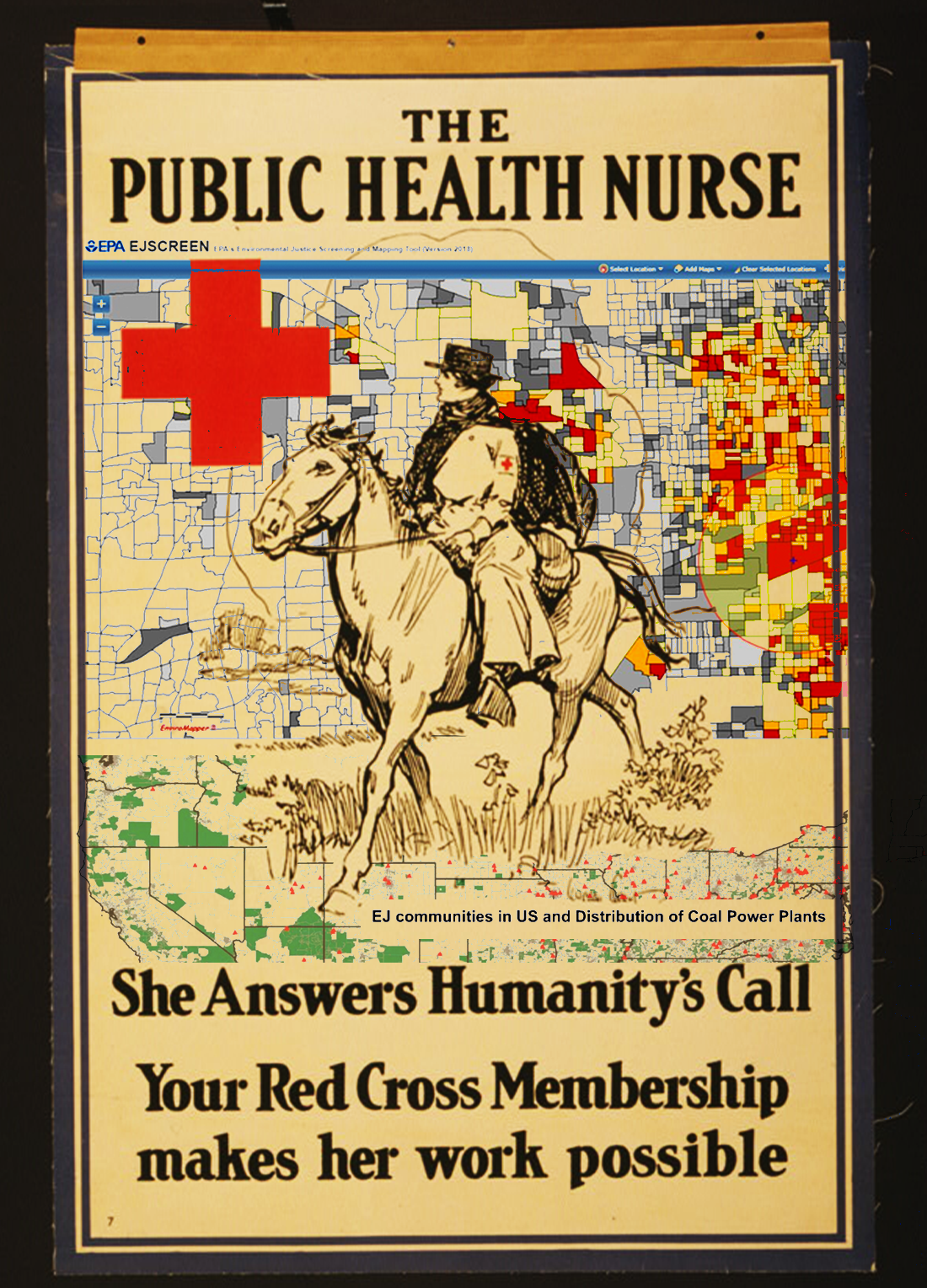Image

Source
Amiri, A. and Zhao, S. 2019. "Environmental justice screening tools: Implications for nursing. Public Health Nursing." https://doi.org/10.1111/phn.12593.
Gordon, G. n.d. "The Public Health Nurse She answers humanity's call : Your Red Cross membership makes her work possible." Library of Congress. https://picryl.com/media/the-public-health-nurse-she-answers-humanitys-call-your-red-cross-membership
Language
English
English

Caption
This is a reworked image of a World War I poster depicting a public health nurse on horseback, presumably traveling to meet her patients and nursing colleagues in person. I have layered a digital map showing unequal distributions of pollution into the background. The map was produced using a tool for exposing environmental justice developed by the U.S. Environmental Protection Agency (EPA). These tools are the focus of a recent research article that encourages contemporary public health nurses to make use of these tools so that they “can educate community members about reducing their personal exposures to the pollutants” (Amiri & Zhao 2019: 419). With this mashed up image, I draw attention both to how public health nursing has changed (in part because of new communications technologies) and to ways it remains focused on individual health and care. Though digital mapping makes it clear that environmental ill health is a social problem (unevenly distributed), nursing discourse still casts the remedy in individual terms. In an interesting, less straightforward turn, the article also encourages nurses to become proficient making environmental justice maps themselves -- since recent EPA cutbacks and questionable data quality heighten the possible of misrepresentations in preconfigured maps. Nurses as individual experts thus bear the burden of corrected a corrupt political apparatus. The individualization of responsibility is thus happening in many guises.
Design Statement
This image collage is used to convey how a particular community of practice (public health nursing) has changed over time, partly through changes in supporting technologies. It also conveys how progressive discourses can remain tethered to entrenched assumptions even when enabled by new technologies and visualization capabilities.